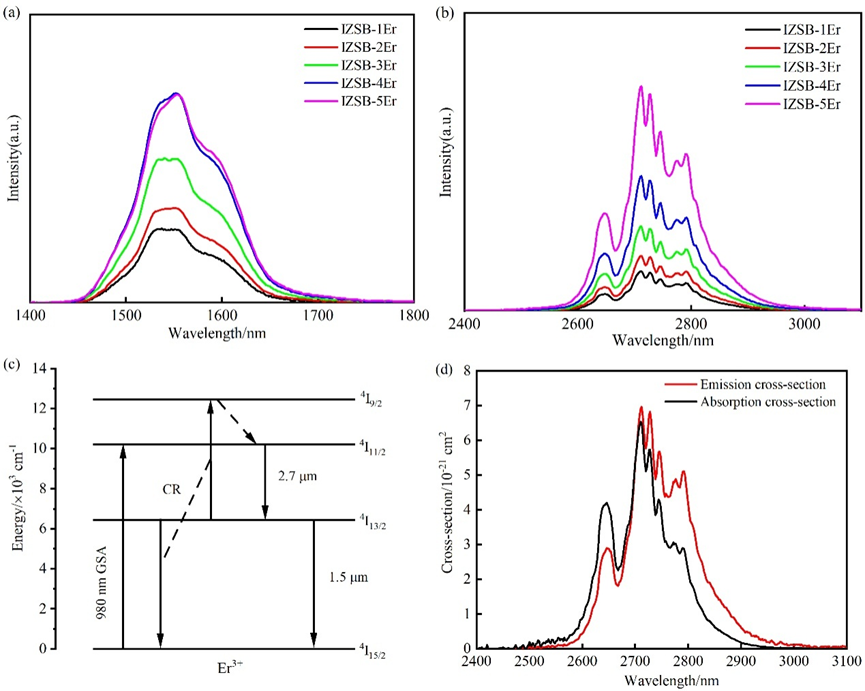Reviewed by Alex SmithAug 23 2021
The advent of mid-infrared lasers has been a boon to medical, military and other fields. Fiber laser is one among them and has garnered wider interest. As the core material of mid-infrared fiber laser, laser glass has a great impact on advancing its performance.
 Quantum efficiency (η) of the 2.7 μm emission from IZSB-xEr samples. Image Credit: Xi’an Institute of Optics and Precision Mechanics.
Quantum efficiency (η) of the 2.7 μm emission from IZSB-xEr samples. Image Credit: Xi’an Institute of Optics and Precision Mechanics.
Currently, the commonly used 2.7 μm fiber laser normally makes use of the form of erbium (Er) doping and exhibits a high requirement for the matrix glass.
Fluoride glass is considered a promising fiber matrix material with its low phonon energy. Although the regular ZBLAN (ZrF4-BaF2-LaF3-AlF3-NaF) glass used at present is comparatively mature, there are also issues like poor thermal conductivity and poor resistance to deliquescence.
On the other hand, fluoroindate glass tends to be highly appealing due to its higher infrared transmittance, lower phonon energy, improved resistance to hydrolysis and wider transmittance ranges.
A group of researchers headed by Jiangbo She from the Xi’an Institute of Optics and Precision Mechanics (XIOPM) of the Chinese Academy of Sciences (CAS) has unraveled the spectroscopic properties of Er3+-doped fluoroindate glasses.
The outcomes of the study have been reported in the Journal of Rare Earths. The samples of fluoroindate glass with various erbium-doped concentrations made in a glove box were analyzed by the scientists. Upon testing, they discovered that the phonon energy of fluoroindate glass was lower compared to that of fluoroaluminate and ZBLAN glass.
Upon excitation of a 980-nm laser, the researchers were able to achieve powerful luminescence of 1.5 μm and 2.7 μm in the mid-infrared region. With the help of the increase in doping concentration to around 5 mol%, the luminescence intensity increased slowly, and further, with the increase of doping concentration, there was no increase in the luminescence intensity, which was because of the fluorescence quenching produced by the increase in concentration.
Fluorescence lifetime and stimulated emission cross section are the key indicators to determine whether the gain material is suitable for laser output.
Jiangbo She, Xi’an Institute of Optics and Precision Mechanics, Chinese Academy of Sciences
As soon as testing was completed, the ideal fluorescence lifespan of fluoroindate glass was determined to be 7.09 ms at 2 mol% erbium doping. This outcome is beyond that of ZBLAN glass (6.49 ms).
The scientists evaluated the emission cross-sectional area as 2.7 μm and the peak excited cross-sectional area was found to be 6.95 × 10−21 cm2 at 2 mol% erbium doping. Even this result is higher compared to the ZBLAN glass.
The study performed by the research group demonstrates that fluoroindate glass offers the benefits of low phonon energy and powerful luminous cross-section. Therefore, it is of great importance to the advancement of mid-infrared fiber lasers.
Journal Reference:
Liu, Z., et al. (2021) Spectroscopic properties of Er3+-doped fluoroindate glasses. Journal of Rare Earths. doi.org/10.1016/j.jre.2021.05.011.